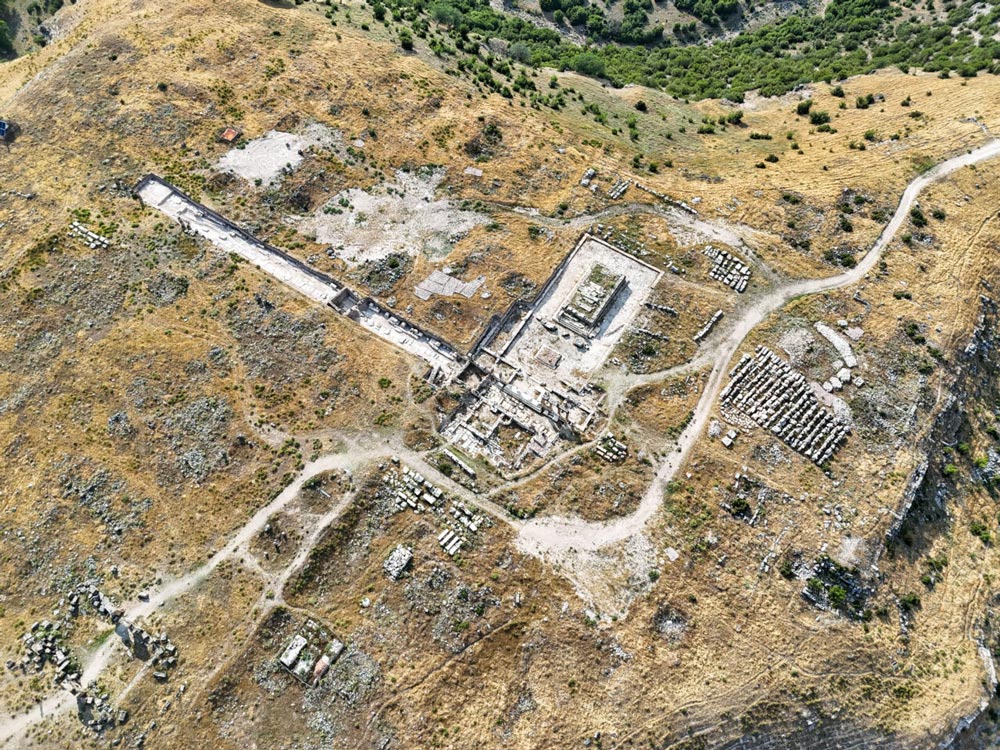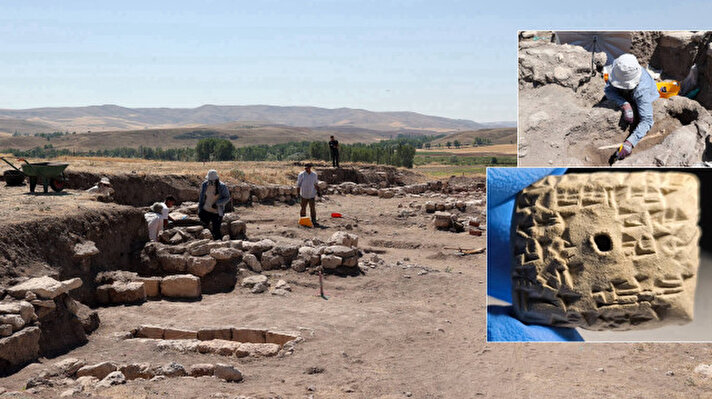Archaeologists are uncovering and restoring a rare ancient library in Stratonikeia, one of the most important Carian cities in southwestern Türkiye. The Carians were a people chronicled by the Greek historian Herodotus in the fifth century B.C.
Included on UNESCO’s World Heritage Tentative List, Stratonikeia is one of the largest known marble cities in the world and is also known as the “City of Gladiators.” Excavations at the site have been ongoing since 1977 and now continue year-round.
Speaking to the state-run Anadolu Agency, Pamukkale University archaeologist Bilal Söğüt, head of the Stratonikeia and Lagina excavation team, said the library is located at the junction of four main streets in the city center.
Originally built during the Hellenistic period, after the death of Alexander the Great, the structure was later redesigned during the Roman era with the addition of mosaics and remained in use until the fourth century A.D., Söğüt said.
Inscriptions on the mosaics reveal that the library was constructed by a master builder from Ephesus, the famous ancient city on Türkiye’s Aegean coast.
Söğüt’s team has been excavating the library for about five years. During this time, they have partially unearthed the entrance, a passageway connecting to South Street, surrounding porticoes, a courtyard, the main reading hall, and several adjoining rooms.
The building suffered major damage in a powerful earthquake around 610 A.D., which devastated the city and led to the library’s abandonment, Söğüt explained.
“We have identified the full story of the structure — how it evolved over time, how it was restored after the earthquake, how it was reused, and the significance it held for people throughout history,” he said.
“We have now determined all the major components of the ancient library. We also uncovered columns and superstructure elements belonging to the courtyard. In the near future, by reconstructing part of these columns, we aim to give visitors a chance to witness the grandeur of the ancient library,” he said.
“Thanks to the excavations, we have made significant discoveries and realized we are working in a truly magnificent library. We now understand its full layout, which differs from other known library plans in Anatolia and even served as a model for a library in North Africa,” he added.












